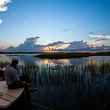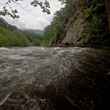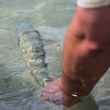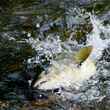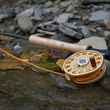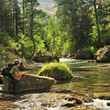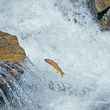It is commonly said that every twentieth rock in a given stream has an adipose fin. The point here is, of course, that every twentieth time you think you've snagged or hit a rock -- you've actually encountered a fish. While it's doubtful there's anything but anecdotal evidence backing the statistical content of this saying, the point it attempts to make remains solid: if you think you're not getting enough hookups when nymphing, one of the most likely reasons is that you're not setting the hook often enough.
Most fisherman that are highly successful at nymphing share a common behavior: they're setting the hook constantly. And this is what you're supposed to be doing, isn't it? Most of us are taught, or teach, indicator nymphing the same way: watch the indicator drift, if it does anything other than float along the surface minding its own business, set the hook.






